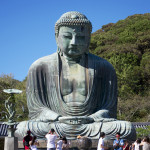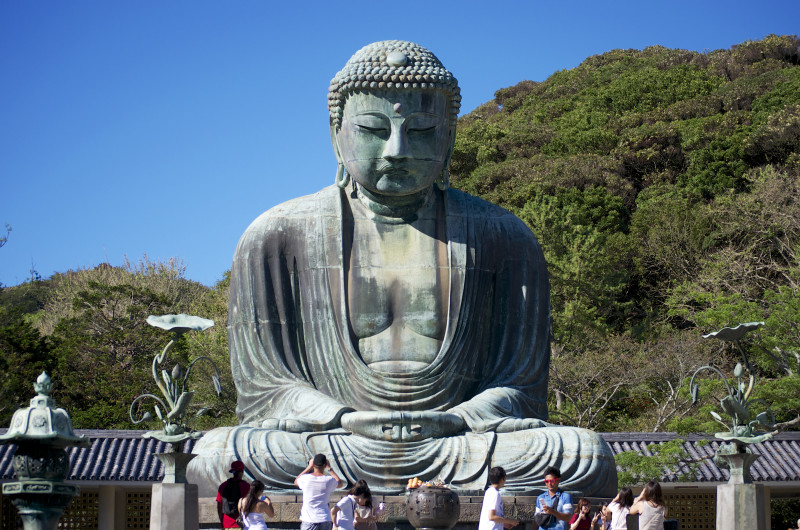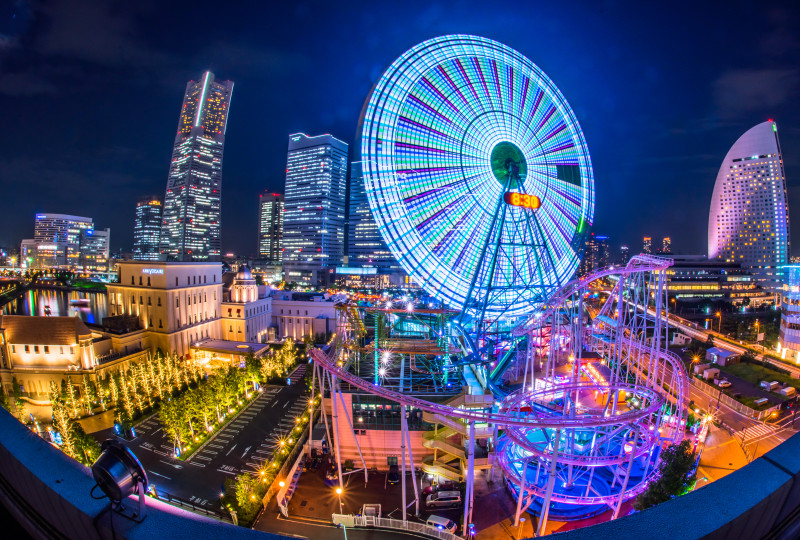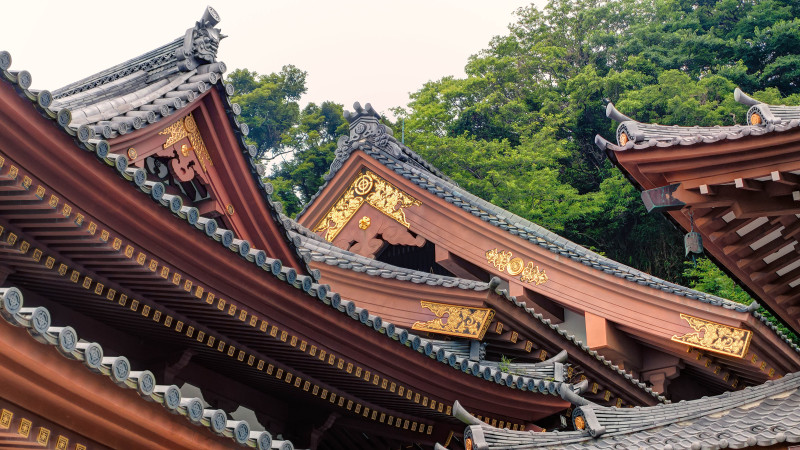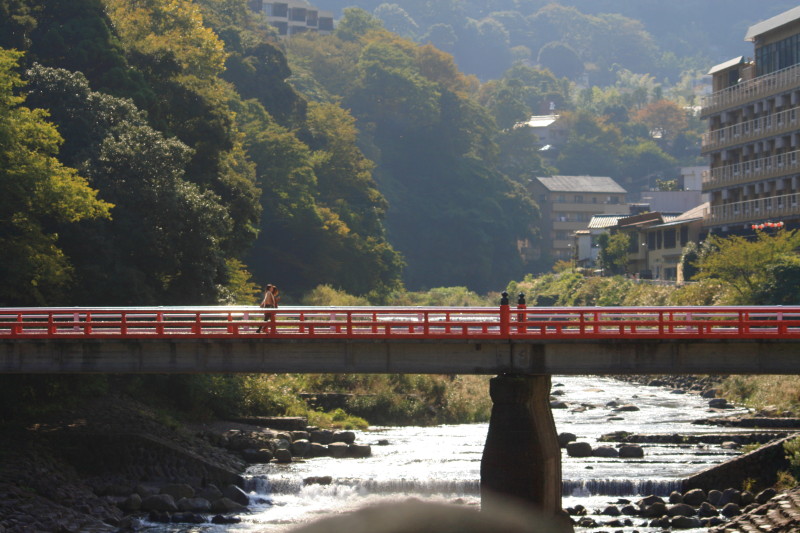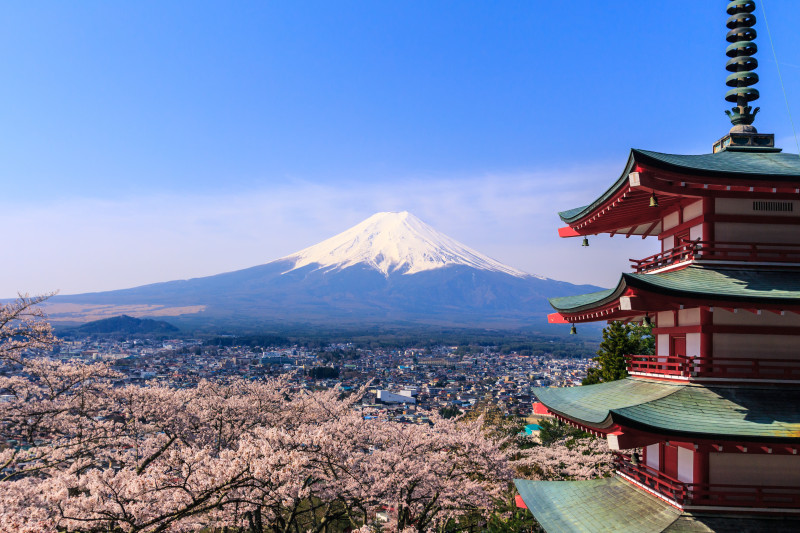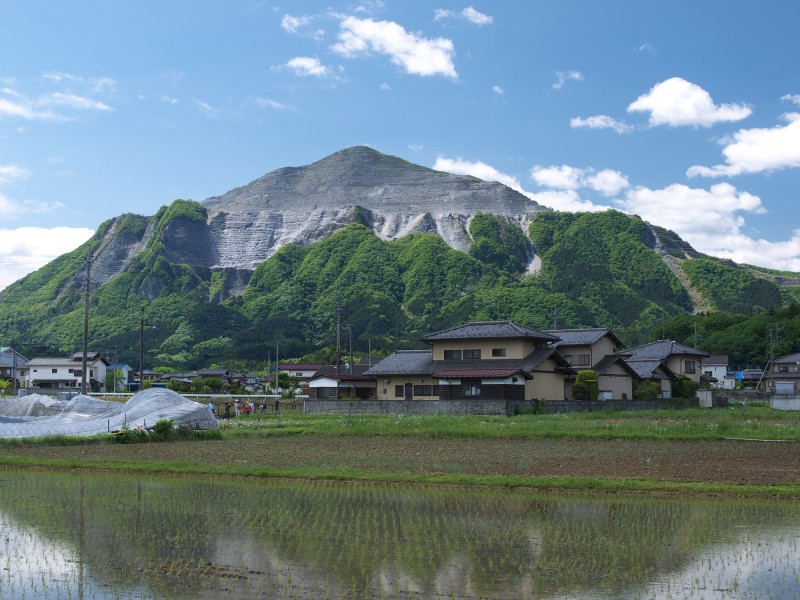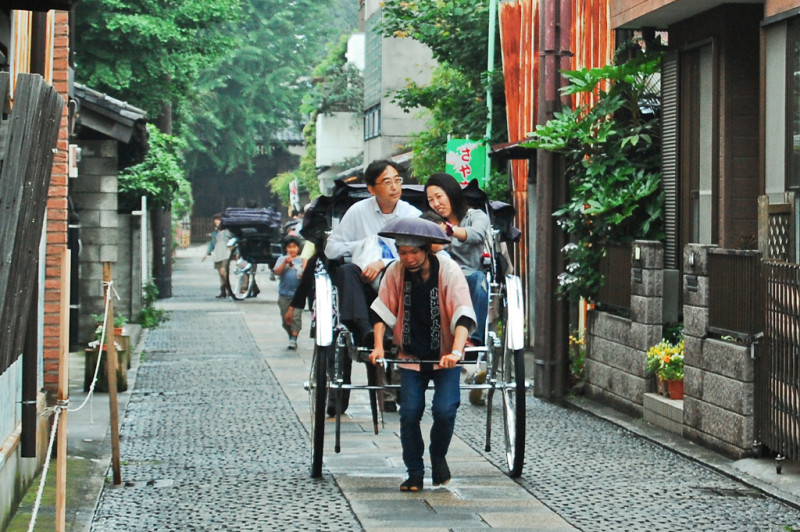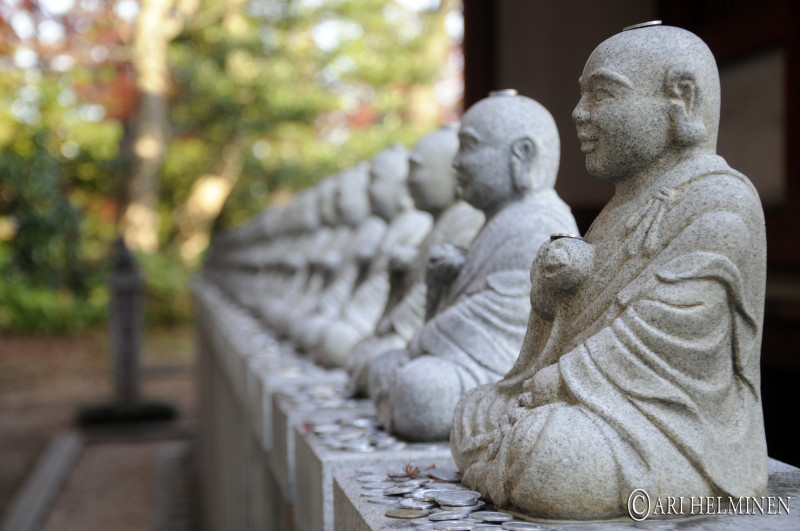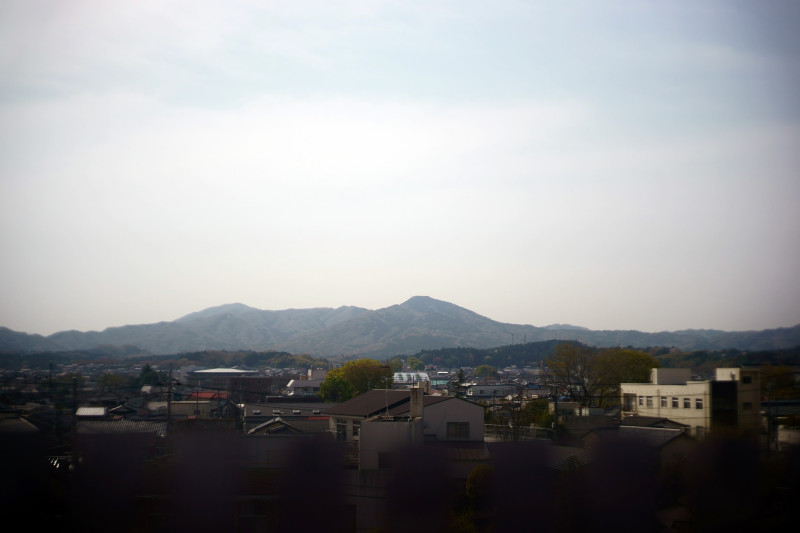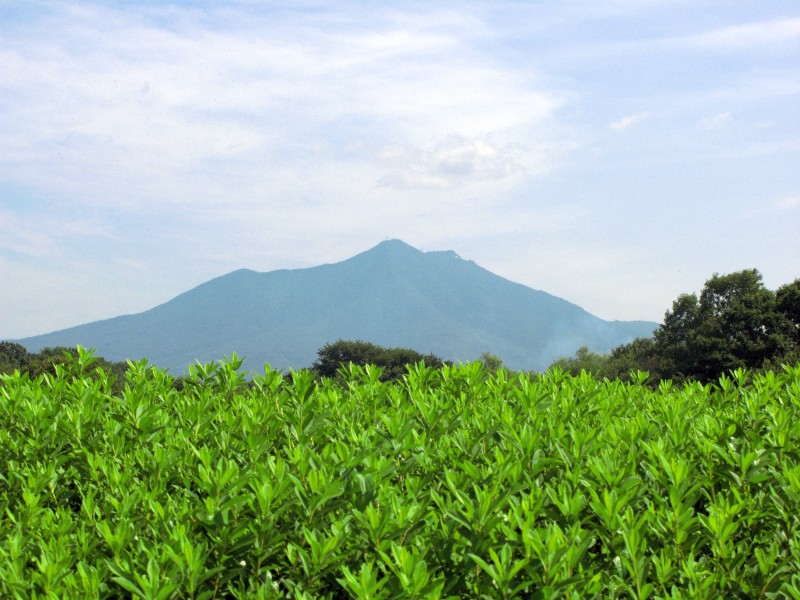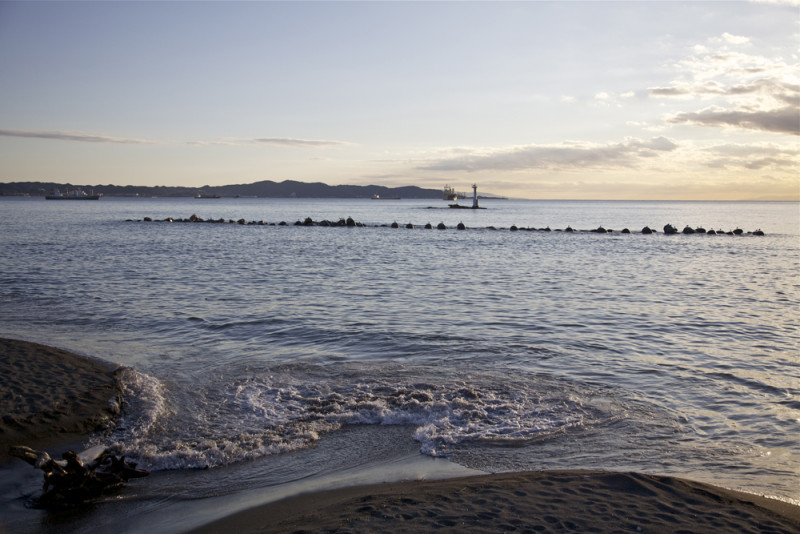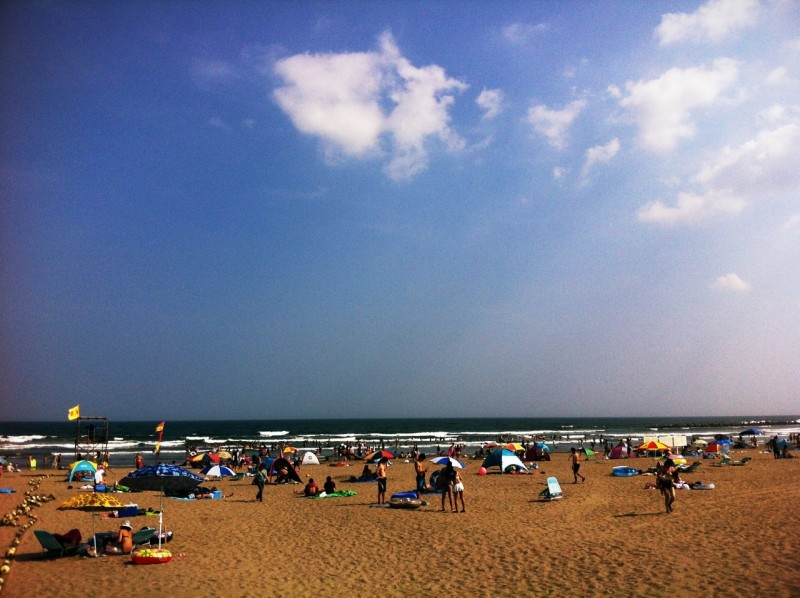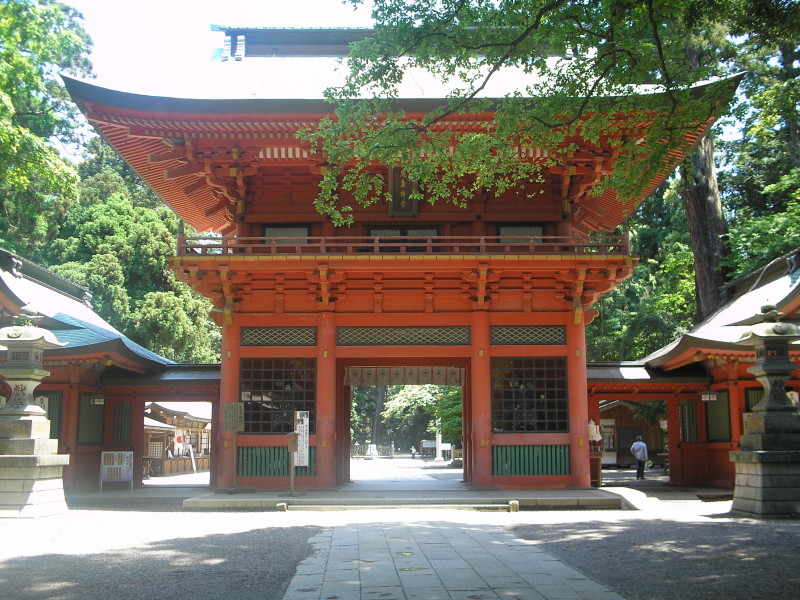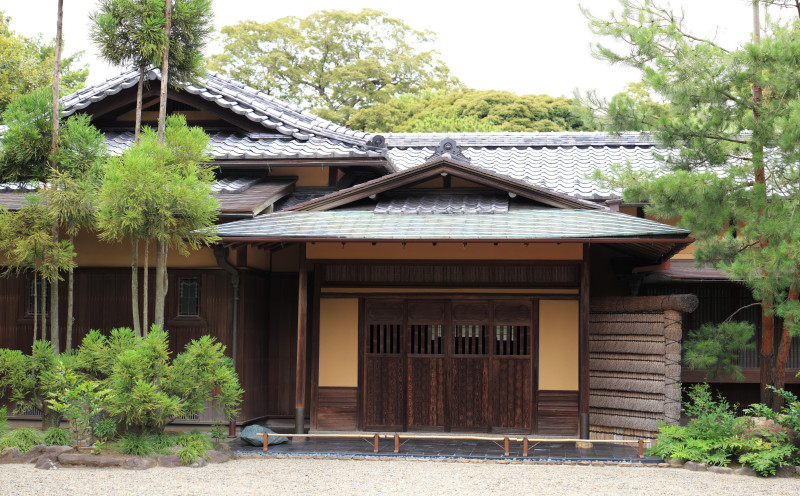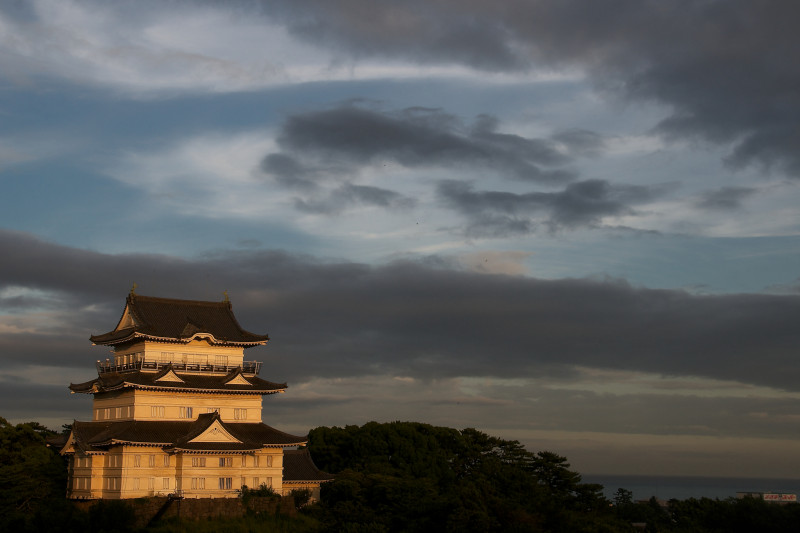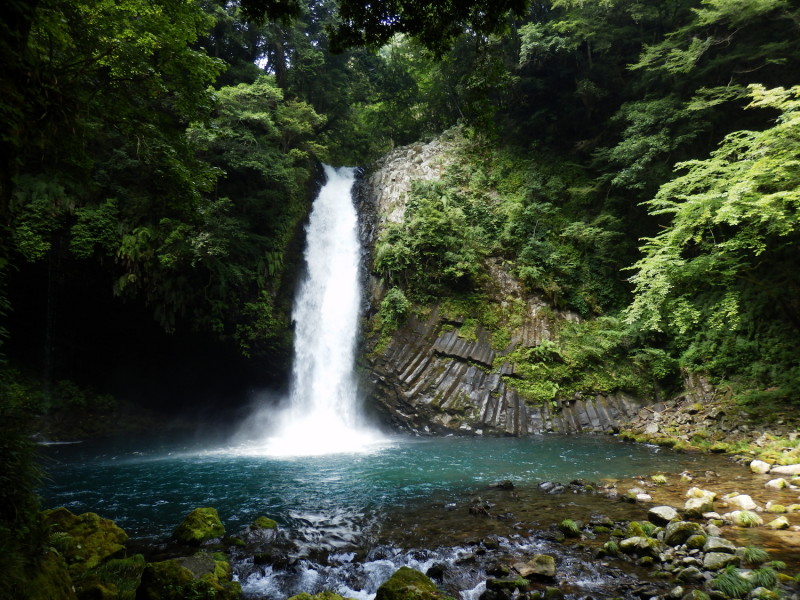If you are planning a trip to Tokyo, you need to know that Tokyo is a wonderful place to be and has so many attractions and places to explore that it can keep you within the city limits for your entire trip, but do not let the city consume your whole trip! There is much more to see in Tokyo area then just Tokyo city!
In this article, we will explore 15 beautiful spots you can enjoy around Tokyo, all within rich of 1-2 hours away from Tokyo city center. From beautiful beaches, to deep forests, to mountain tops, the area surrounding Tokyo can offer so much more to your urban trip allowing you to get some fresh air as well as explore “real Japan” – instead of ultra modern Tokyo. It is a great chance to see what Japan is all about other then the the Tokyo city center!
1. Yokohama
Yokohama is a massive city, the second largest in Japan, located just south of Tokyo in Kanagawa prefecture and is Kanazawa prefecture capitol city. Yokohama has evolved from a small fishing town to one of Japan largest ports and its development can be credited to Commodore Matthew Perry, who arrived to Yokohama with a whole fleets of American warships with a demand to the Japanese Tokugawa shogunate to open Japan for commerce with the rest of the world. As Yokohama Port was opened to the world, the city of Yokohama grew in rapid pace to become the modern Yokohama we know today. If you do plan to visit the city you should surely need to check Minato Mirai shopping and entertainment complex which is located right next to Yokohama Station. Minato Mirai area includes Yokohama Landmark Tower, 296 meter sky scraper with a shopping complex, Yokohama Red Brick Warehouse, a complex building where you can enjoy shopping and dining, and many amusement with approximately 500 Chinese restaurants, Chinese grocery stores and plenty of other shops standing side by side on the streets.
Information
- Name: Yokohama
- Prefecture: Kanagawa
- Population: 3,697,894
- Website: http://www.city.yokohama.lg.jp
2. Kamakura
Kamakura is a Japanese city located by the sea just south of Tokyo. Kamakura has a very rich history and it has used to be the political center of medieval Japan, and there is even an era in Japan called the Kamakura Period (1185–1333) in which the city was at its most influential time. Modern day Kamakura is a beautiful resort town with endless amount of Buddhist Zen temples and Shinto shrines which survived since Kamakura old days of glory. The most famous landmark in Kamakura is the Kotoku-in Temple’s Great Buddha, which host a 13 meter high bronze statue of Buddha and is still standing even after a 15th-century tsunami! Beyond the landmark temples and shrines and the beautiful nature which surrounds them, Kamakura is also quite a famous surfing spot in Yuigahama Beach on Sagami Bay. Surfing and sunbathing is probably what this beach is known for and is the closest beach you can get from Tokyo center.
Information
- Name: Kamakura
- Prefecture: Kanagawa
- Population: 174,412
- Website: http://www.city.kamakura.kanagawa.jp
3. Hakone
Hakone town is located west of Tokyo in Kanagawa prefecture right in the middle of Fuji-Hakone-Izu National Park. Hakone is a very famous town known for its many hot springs resorts and Mt. Fuji views from one of its most glorious angles. The many hot springs located in the city and around it are all coming out of the volcanic mountains around the city and are considered some of the best in Japan. Other famous spot in Hakone area is Hakone Jinja, which is a Shinto shrine with a red “torii” gate facing the lake Lake Ashi, which can be toured by boat or by the main tracking trails around it. Some of the best hot springs are actually located at the Owakudani valley deep inside the mountain range surrounding Hakone town, and if you want to enjoy the view of the whole valley, you should not miss the Hakone Ropeway cable car! Overall, Hakone area is considered a very popular tourist spot for both international and Japanese tourist who are looking to get away from the city and enjoy a relaxing time in nature.
Information
- Name: Hakone
- Prefecture: Kanagawa
- Population: 13,492
- Website: http://www.town.hakone.kanagawa.jp
4. Mt. Fuji
Mt. Fuji is an active volcano about 100 kilometers southwest of Tokyo right in between Shizuoka and Yamanashi prefectures. When you visit Japan, you will surely hear Japanese reference the mountain as “Fuji-san” in pride, as it is Japan’s tallest mountain with a summit reaching 3,776 meters. Mt. Fuji has a special climbing season which starts in July and ends in mid-September which attract thousands of people to climb it every year. You can reach Mt. Fuji using a bus from Shinjuku Station in Tokyo which takes you all the way up to the 5th station which is the start point of the climbing trails. From there, there are a few trails which you can choose from to climb the mountain all the way to the summit, and each trail is dotted with small huts which allow resting and over night sleeping. If you are not planning to climb the mountain, you can still enjoy Mt. Fuji 5 lakes which surrounds the mounting and offer a breathtaking views of the towering peak!
Information
- Name: Mt. Fuji
- Prefecture: Shizuoka
- Population: 3,774,471
- Website: http://www.fujisan-climb.jp/en/
5. Saitama
Saitama is the capital city of Saitama Prefecture in Japan, which is located south-east of Tokyo prefecture and in many ways, considered a Tokyo suburb. One of the most popular places in Saitama is the city of Chichibu which is located deep within Saitama mountains and offers a beautiful natural experience of forests, rivers, canals and best of all, some of the best hot springs in the prefecture! The Saitama area is very popular among residents of both Tokyo and the surrounding prefectures as a place for short trips, picnics, and summer holiday vacations, as it is easily accessible via the railroad network from every other prefecture. Saitama Prefecture is also a great place to enjoy Japanese Sake! The prefecture has 35 sake breweries, each of which has a long tradition and has been making Japanese sake for many generations!
Information
- Name: Saitama
- Prefecture: Saitama
- Population: 7,237,734
- Website: http://www.pref.saitama.lg.jp
6. Kawagoe
Kawagoe is a small town in Saitama Prefecture known for its very traditional Japanese style. The town is just a 30 minutes train ride from center Tokyo and offer a magnificent view into traditional Japan with some of the town streets still preserve the old castle town look of the Edo period in the 17th, 18th and early 19th century. The most famous site in Kawagoe is the bell tower which serves as the symbol for Koedo shopping and restaurants area and rings three times a day. If you really want to feel the Japanese energy, try to take a stroll through the town in a kimono and wood sandals and you’ll feel as if you’ve travelled back in time to ancient Edo. Another famous site in Kawagoe is the 500 Rakan statues at Kita-in Buddhist temple which is a very popular gathering spot for New Year celebration. Kawagoe is also famous for its sweet potatoes, and the local “Candy Street” sells such treats as sweet potato chips, sweet potato ice cream, sweet potato coffee, and even sweet potato beer, brewed at the local Koedo Brewery!
Information
- Name: Kawagoe
- Prefecture: Saitama
- Population: 349,907
- Website: http://www.city.kawagoe.saitama.jp
7. Takao
Mount Takao is a mountain in the city of Hachioji,which is located at the very edge of Tokyo, about 40 km from Tokyo center. Mt. Takao is protected within “Meiji no Mori” which is Takao National Park. Mt. Takao is 599 metres (1,965 ft) tall and is a very popular hiking area for all Tokyo residents. The mountain is also considered a very holy site as it is closely associated with “tengu”, a Japanese god legendary creature found in Japanese folk and religious writings. Climbers and hikers in Mount Takao can choose to start climbing from the base of the mountain or take a cable car or a lift ride halfway up the mountain and then climb from that spot. Trail number 1 from the base of the mountain is a bit of a hard climb, but it is fully paved and leads past the top stations of the lift and cable car all the way up to the summit. Trail 6 and the “Inariyama Trail” are unpaved natural trails which start from the base of the mountain and go all the way to the summit, but they do not pass the life or the cable car stations and are purely for hiking.
Information
- Name: Mt. Takao
- Prefecture: Tokyo
8. Kasama
Kasama is a city located in Ibaraki Prefecture, about 90km north of Tokyo near the center of Ibaraki Prefecture. Kasama Potteries are very famous throughout Japan and visitors to Kasama can both enjoy shopping for some of the finest pottery in the Kanto region as well as enjoy experiencing ceramics classes and hand on creations! The town offers daily classes in ceramics as well as tours inside potteries allowing visitors to see how those beautiful ceramics are been created and who are the people which makes them. It is a great experience for both adults and kids, in case you visit Tokyo area with your whole family, do not miss on Kalam potteries tour and hand on experience! Kasama city also offer easy access to Kasama’s Inari Shrine, which is one of Japan’s three main shrines, and is a major tourist attraction in the area.
Information
- Name: Kasama
- Prefecture: Ibaraki
- Population: 76,888
- Website: http://www.city.kasama.ibaraki.jp
9. Mt. Tsukuba
Mount Tsukuba is 877 meters tall mountain located near Tsukuba, north of Tokyo. It is one of the most famous mountains in Japan, particularly well known for its double peaks, Nyotai-san and Nantai-san which from both you can have a magnificent look of the whole Kanto region. The most popular path to the mountain peak is a hiking trail which starts from Tsutsujigaoka at the east foot of the mountain. On the way to the summit, hikers can see a series of strange rocks and bizarre stones formations called “Defune-Irifune” which means “Ships arrival and departure” in Japanese because of their unique shape after their appearance looking like ships which are leaving and arriving at a port. If you are not into hiking for many hours, you can always use Tsukuba-san Cable Car which connects Tsukuba-san Shrine at the door of the mountain and the summit of Mt. Nantai. If you really look for a beautiful view of the area, try Tsukuba-san Ropeway, which is a lift which takes you from Tsutsujigaoka to the top of Mt. Nyotai!
Information
- Name: Mt. Tsukuba
- Prefecture: Ibaraki
- Population: 223,151
- Website: http://www.city.tsukuba.ibaraki.jp
10. Tateyama
Tateyama is a seaside city located in Chiba prefecture, north east of Tokyo at the far southern tip of the Boso Peninsula, facing the Pacific Ocean to the east and south, and the entrance to Tokyo Bay on the west. This city is known for its beautiful beaches and relaxed lifestyle and is often appearing in Japanese TV drama and movies which are filmed with ocean views and beach scenes. One of the most famous spots in Tateyama is Tateyama Castle which was built in the 16th. The castle stands at the top of a small hill and symbolize the Samurai era in Japan and the special architecture the government in ancient Japan used to build. The existing four stories castle was rebuilt in 1982 as an annex to the Tateyama City Museum. Many materials relating to the historical novel “Nanso Satomi Hakkenden”, written by Takizawa Bakin and set in this region, are exhibited in the castle building. If you are looking to learn about Japan history, the Tateyama castle is both a beautiful photo spot as well as a wonderful place to learn about Japan past.
Information
- Name: Tateyama
- Prefecture: Chiba
- Population: 48,775
- Website: http://www.city.tateyama.chiba.jp
11. Kujukuri
Kujukuri is a town located in Sanbu District in Chiba Prefecture north east of Tokyo. The city is most famous for its Kujukuri Beach, which is Japan’s second longest beach. The Kujukuri Beach is 66 kilometer long coastline that starts at Cape Gyobu and continue all the way to Cape Daito in Misaki Town. The coats faces the magnificent Pacific Ocean and its straight coastline is very rare in Japan, where most of the coastlines are irregular shaped or forms small bays. There are no reefs in Kujukuri Beach allowing the place to be perfect spot for swimming in the open sea, as well as surfing, wind-surfing and other marine sports. The whole coastline is dotted with recreational activities places where you can try resort fishing and sea kayaking.
Information
- Name: Kujukuri
- Prefecture: Chiba
- Population: 17,466
- Website: http://www.town.kujukuri.chiba.jp
12. Kashima
Kashima is a city located about 110 kilometers north of Tokyo in southeastern part of Ibaraki Prefecture, bordered by the Pacific Ocean to the east and Lake Kasumigaura to the west. Kashina is a very old city which is dated to the Nara period (710-794) but the modern Kashima is a host to large Industrial Zone, and it has a large industrial park with about 1500 factories, especially petrochemical and steel plants. One of the most famous spots in the area is Kashima Jingu Shrine which is dedicated to the Shinto Kami Takemikazuchi-no-Okami, one of the patron deities of Japanese martial arts. During the New Year, from the first to the third of January, Kashima Shrine is visited by over 600,000 people from all over Japan and it is the second most visited shrine in Ibaraki prefecture. Right next to the shrine, visitors can find the Kashima Shiroyama Park which is a beautiful park and known for his magnificent Cherry blossom viewing spots!
Information
- Name: Kashima
- Prefecture: Ibaraki
- Population: 66,860
- Website: http://www.city.kashima.ibaraki.jp
13. Noda
Noda is a city located in the very far northwestern Chiba Prefecture and is a know river-port city in Chiba and in ancient times, it was a post town on the pilgrimage road to Nikko. The most famous product of Noda is Soy sauce and as people in Japan claim, when you visit Noda, you can smell the sweet smell of Soy source everywhere! The most famous Soy source maker in Noda is “Kikkoman” which is a Japanese corporation which evolve globally to offer soy sauce, food seasoning and flavoring, mirin, shochu, Japanese sake, juice and other beverages all around the world. Visitors to Noda can enjoy a tour in Kikkoman factory to see how the Soy sauce is naturally brewed. If you by any mean a Soy source fan and like to see how the real product is been made while trying some of the finest Soy sauces in Japan, don’t miss visiting Noda city and the Nikkoman factory!
Information
- Name: Noda
- Prefecture: Chiba
- Population: 155,644
- Website: http://www.city.noda.chiba.jp
14. Odawara
Odawara is a city located in western Kanagawa Prefecture, south of Tokyo and is most famous for its Odawara Castle, where the Hojo family, rulers of the Kanto region during the Sengoku Period (1467-1603). The caste forms a large three-tiered five-storied building with the top floor which is an observatory. The moat and stone wall remain as they were in olden times and showcase the beauty of Japanese Edo era architecture. Odawara initially flourished around the castle of the Hojo family and was a main stopping place on the ancient Tokaido Highway, which was the main transport artery that linked Edo (former Tokyo) and Kyoto. Odawara Harbor is the main spot where seafood is delivered to the town, and ‘kamaboko’ which is steamed processed fish meat made on a wooden block is one of the main products of Odawara. Other nationally famous special products of Odawara include pickled plums, paper lanterns, and lacquerware.
Information
- Name: Odawara
- Prefecture: Kanagawa
- Population: 194,672
- Website: http://www.city.odawara.kanagawa.jp
15. Izu
Izu is a city located in central Izu Peninsula in Shizuoka Prefecture, southeast of Tokyo and most of the city area is covered by lush forest. The Kano River runs through the city and flow out to the where Izu has a short coastline to the west on Suruga Bay of the Pacific Ocean. Izu is known to be a tourist town because of its beautiful hills, many hot springs, and sunny seaside resorts. The city is offering many tourist accommodations, both western and traditional, making the Izu area one of the most representative year-round tourist areas around Tokyo. One of the most famous hot springs in Izu is the Atami hot spring which is a vast hot-spring resort with many large luxurious inns, is known for its beautiful night views. Another favorite tourist attraction in Izu is Atami Himenosawa Park, which is located on a mountainside and offers a beautiful spring Azaleas and Cherry blossoms!
Information
- Name: Izu
- Prefecture: Shizuoka
- Population: 31,265
- Website: http://www.city.izu.shizuoka.jp
Have a good trip and travel!
